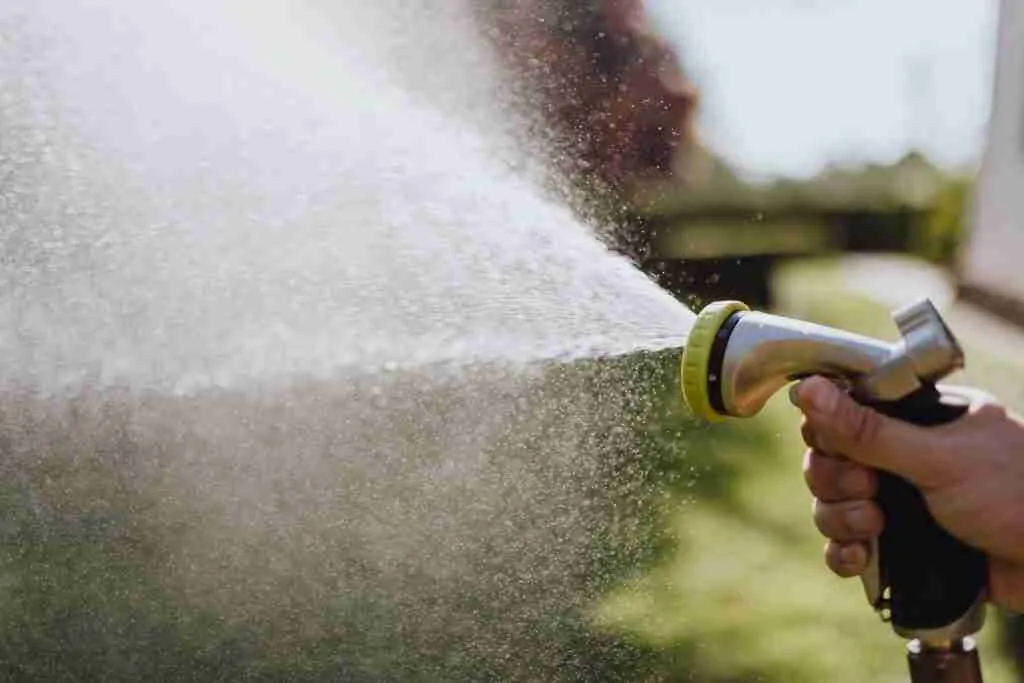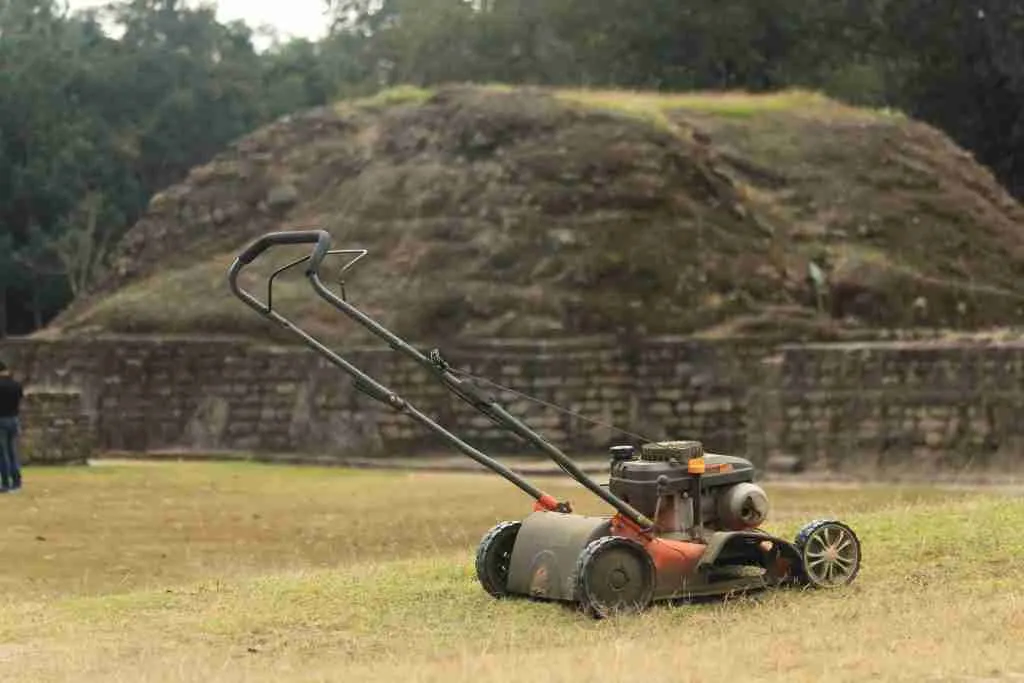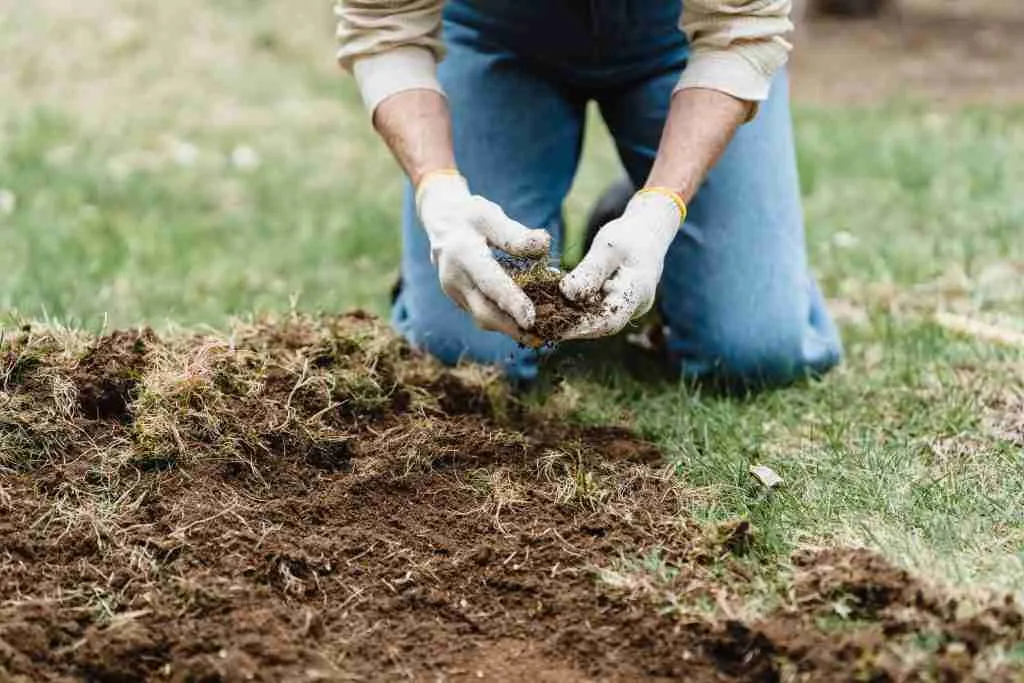Contents
ToggleIntroduction
Aerating the lawn is an important step in maintaining a healthy and vibrant garden. By creating small holes in the soil, aeration allows for better air circulation, nutrient absorption, and water penetration. After aerating the lawn, it is crucial to follow certain steps to maximize its benefits. These steps include overseeding, fertilizing, and watering appropriately. This ensures that the newly created pathways in the soil are utilized effectively, resulting in a lush and thriving lawn. Taking these post-aeration measures will help rejuvenate the grass and promote its overall health.
A pertinent detail to consider is the timing of aeration. It is recommended to aerate the lawn during the growing season, either in early spring or fall. This allows the grass to recover quickly and take advantage of the improved soil conditions. Another important aspect is overseeding after aeration. Overseeding helps fill in any bare patches in the lawn, promoting denser and more uniform growth. Additionally, applying fertilizer post-aeration provides essential nutrients to the grass, aiding its recovery and promoting vigorous growth.
To find out how much grass seed you’ll need for effective overseeding, you might find this guide on how much grass seed do I need useful.
Incorporating these steps into your lawn care routine can greatly enhance the results of aeration. It is essential to ensure that the lawn remains well-watered during this process. Proper watering helps the grass roots establish themselves in the freshly aerated soil, facilitating healthy growth. By following these guidelines, you can effectively maintain a beautiful and resilient lawn.
To understand the optimal timing for aeration based on specific climates, consider this guide on when to aerate the lawn in Ohio.
What to Expect After Aeration

Aerating the lawn can bring about various changes in the soil and overall condition of your lawn. Here’s a concise guide on what you can expect after aeration:
- Enhanced Oxygen and Nutrient Absorption: When you aerate the lawn, it allows for better penetration of oxygen and nutrients into the soil. This promotes healthier root development and improved overall growth of your grass.
- Reduced Soil Compaction: Aeration helps alleviate soil compaction by creating small holes in the ground, allowing for air, water, and nutrients to reach the grass roots more efficiently. As a result, you may notice improved drainage and reduced thatch buildup. If you’re dealing with the issue of a sinking lawn when walking on it, understanding how aeration can help might be useful. Learn more about why your lawn sinks when walking on it here.
- Temporary Disruption and Recovery Period: Immediately after aeration, your lawn may appear disrupted with visible soil plugs on the surface. However, this is a temporary phenomenon. Over time, the soil plugs will break down and blend back into the lawn. Regular irrigation and fertilization will aid in the recovery process.
It’s important to avoid heavy foot traffic or mowing for a few weeks after aeration to allow sufficient time for the grass to recover. By understanding what to expect after aeration, you can better plan and care for your lawn to achieve the desired results.
True History:
Aeration has been widely practiced for many years as an effective lawn care technique. Its origins can be traced back to ancient agricultural practices, where farmers would manually perforate the soil to improve plant growth. Today, with advancements in machinery and technology, aeration has become more efficient and accessible to homeowners and landscapers alike. Its proven benefits have made it a staple in lawn care routines worldwide.
Proper Watering Schedule

A professional watering routine is vital for the health of your lawn. Follow this 5-step guide to ensure a proper watering schedule:
- Determine the watering needs of your lawn based on the type of grass and weather conditions.
- Water deeply and infrequently to encourage healthy root growth. Aim for about 1 inch of water per week.
- Water in the early morning to minimize evaporation and allow the grass to dry before evening.
- Use a sprinkler system or hose with a sprinkler attachment to evenly distribute the water.
- Monitor the soil moisture level and adjust your watering schedule accordingly.
To further enhance your understanding, here are some unique details about proper watering:
- Different soil types may require adjustments in watering frequency to prevent over or under-watering.
- Mulching around plants and in garden beds can help retain moisture and reduce the need for excessive watering.
It is important to note that consistently following a proper watering schedule can significantly improve the overall health and appearance of your lawn.
When it comes to watering newly seeded areas, here’s a guide on how often to water new grass seed.
True Fact: According to a study conducted by the University of California Statewide Integrated Pest Management Program, proper watering practices can reduce water usage by up to 50%.
Remember, maintaining a proper watering schedule is crucial for a thriving lawn.
To Mow or Not to Mow?

The decision of whether or not to mow your lawn after aerating it can depend on several factors. One key consideration is the length of the grass blades. If they are excessively long, it is generally recommended to mow the lawn after aeration. However, if the grass is already at an appropriate height, it may not be necessary to mow immediately.
Additionally, it is important to consider the overall health of the lawn. If it appears stressed or weak, it may be best to avoid mowing right away and instead focus on providing proper care and maintenance to promote recovery.
Another factor to consider is the timing of the aeration process. It is generally recommended to aerate the lawn in early spring or fall, when the grass is actively growing. If this is the case, mowing after aeration can help remove any debris and clippings that may have accumulated during the process. However, if aeration was done during the hot summer months, it is advisable to wait for cooler weather before mowing, as the stress of mowing can further damage the already stressed grass.
It is also worth noting that the type of grass in your lawn can impact the decision to mow or not to mow. Different grass species have varying growth rates and characteristics. For example, warm-season grasses typically benefit from mowing after aeration to promote lateral growth and overall healthy growth patterns. On the other hand, cool-season grasses may not require immediate mowing as they tend to recover and fill in more quickly.
Ultimately, the decision of whether or not to mow after aerating your lawn should be based on the specific conditions of your lawn, including grass length, overall health, timing, and grass species.
To better understand when to begin mowing your lawn in the context of different situations, you might find this article on when you should start mowing your lawn helpful.
Allowing Your Lawn to Rest
Rest is crucial for your lawn’s health and vitality. Here’s how to properly allow your lawn to rest and thrive:
- 1. Avoid Heavy Foot Traffic: Minimize walking or playing on the lawn to prevent soil compaction and damage to the grass.
- 2. Limit Mowing: Reduce mowing frequency and keep the grass slightly taller, allowing it to store more energy and grow stronger.
- 3. Avoid Excessive Watering: Cut back on watering to promote deep root growth and resilience during dry spells.
- 4. Control Weeds and Pests: Regularly monitor and address weed and pest issues to prevent them from competing with the grass for resources.
Remember to periodically aerate and oversee your lawn to enhance its overall health and recovery. By practicing these guidelines, you can create optimum conditions for your lawn to flourish.
As we delve into the background, it is fascinating to note that the concept of lawn rejuvenation through rest has been practiced since ancient times. Centuries ago, gardeners and landowners recognized the importance of allowing the land to rest and recover. This timeless wisdom continues to be relevant in modern lawn care practices, highlighting the significance of giving your lawn the opportunity to rest and revitalize for long-term success.
Conclusion
Aerating the lawn is an essential step in maintaining its health and appearance. By creating small holes in the soil, aerating allows for better water and nutrient absorption, promotes root growth, and reduces soil compaction. Additionally, it improves air circulation, making it easier for the grass to breathe.
To maximize the benefits of lawn aeration, it is recommended to overseed, fertilize, and water appropriately after the process. This ensures that the grass recovers quickly and new growth is encouraged. Overall, proper post-aeration care is crucial in achieving a lush and thriving lawn.
One unique detail to note is that timing plays a significant role in post-aeration activities. It is best to carry out overseeding and fertilization immediately after aerating to allow the newly introduced grass seeds to establish roots and benefit from the improved soil conditions.
Five Facts About What To Do After Aerating Lawn:
- ✅ Aeration allows air to reach the grass roots and improves nutrient and water absorption. (Source: Team Research)
- ✅ After aeration, your lawn will have small holes all over it, but they will break down naturally in about three weeks. (Source: Team Research)
- ✅ Applying fertilizers after aeration provides necessary nutrients to the grass roots and protects new grass from extreme climates. (Source: Team Research)
- ✅ Aeration creates evenly spaced holes in the soil, making it a perfect opportunity to overseed your lawn and promote new growth. (Source: Team Research)
- ✅ Watering after aeration should be done lightly for about 20 minutes to prevent water from building up in the holes. (Source: Team Research)
FAQs about What To Do After Aerating Lawn
What should I do after aerating my lawn?
After aerating your lawn, there are several important steps to follow:
- Let the plugs of soil break down naturally by consistently watering and mowing the lawn.
- Apply fertilizers to provide necessary nutrients to the grass roots.
- Consider overseeding your lawn to fill in thin areas and bare spots. For a more detailed guide on how to aerate and overseed your lawn, click here.
- Apply weed treatments, but avoid doing so within 4 weeks after planting seeds or 6 weeks before planting.
- Adjust your watering schedule to lightly water the lawn for about 20 minutes instead of a thorough watering.
- Avoid mowing the lawn immediately after aeration and let it rest for a while.
Should I let the plugs of soil break down naturally after aerating my lawn?
Yes, it is recommended to let the plugs of soil break down naturally after aerating your lawn. They will decompose and gradually work their way back into the soil, contributing to its health. Consistently watering and mowing the lawn can help speed up this process.
When should I apply fertilizers after aerating my lawn?
After aerating your lawn, it is an ideal time to apply fertilizers. The disrupted and less compact soil allows the fertilizer to travel deep into the ground and reach the grass roots. Organic fertilizers containing nitrogen are recommended, but you can choose the fertilizer based on the grass type of your lawn.
Can I overseed my lawn after aerating it?
Yes, aerating your lawn provides the perfect opportunity for overseeding, especially if you have a thin lawn with bare spots. The evenly spaced holes left by the aeration machine allow your seeds to establish roots and protect them from birds and other predators. You can use a spreader or plant the seeds by hand, and regular watering is important to help the seeds germinate.
Can I apply weed treatments after aerating my lawn?
If you have freshly planted seeds, it is recommended to avoid applying weed treatments for about 4 weeks after planting or 6 weeks before planting. This is because some herbicides can prevent the growth and sprouting of the seeds. However, if you don’t plan to overseed your lawn, you can go ahead and apply herbicides after aerating. The small holes created by aeration allow weed killer to penetrate deep into the soil and prevent weed growth.
How should I water my lawn after aerating it?
After aerating your lawn, adjust your watering schedule to lightly water the lawn for about 20 minutes instead of a thorough watering. This is done to prevent water from building up in the holes left behind after aeration. Watering should be done after overseeding and fertilizing to encourage root growth. A regular watering schedule is important, especially if your soil is compact due to high foot traffic.
Additional Reading
After learning about what to do after aerating your lawn, you might be interested in these additional articles that further expand on lawn care and maintenance:
- How Much Does a Riding Lawn Mower Weigh?: Gain insights into the average weight of a riding lawn mower and its implications for your yard care routine.
- Can You Use Car Oil in a Lawn Mower?: Discover whether using car oil in your lawn mower is a feasible option.
- How to Stop Dog Urine from Killing Grass Naturally: Get practical tips to protect your lawn from pet-related damage.
- What is a Brushless Lawn Mower?: Understand the technology behind brushless lawn mowers and their benefits for lawn care.
- How to Drain a Pool with a Garden Hose: Learn how to empty your swimming pool using a simple garden hose.























































